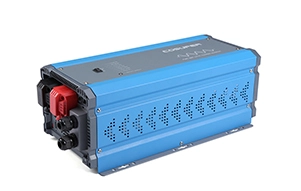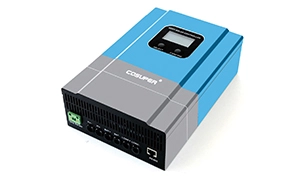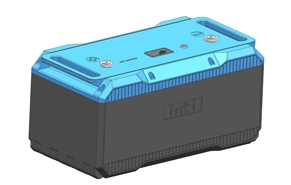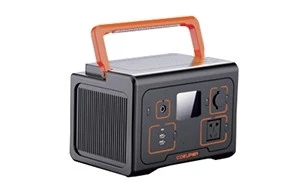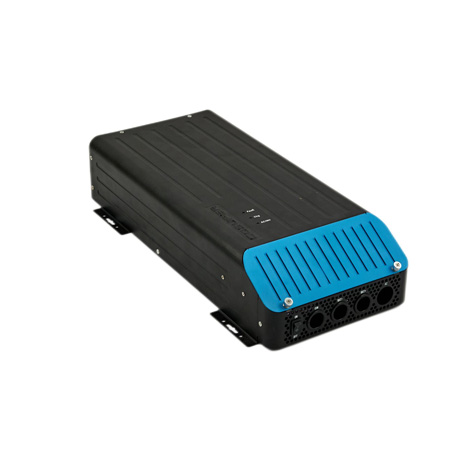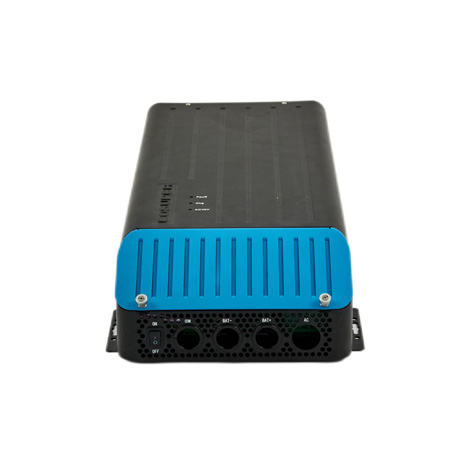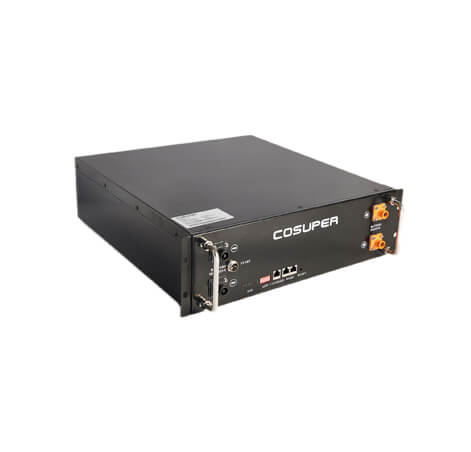A solar AC power generation system is composed of solar panels, solar charge controllers, inverters, and batteries.
Classification of Solar Inverters by Application
Ordinary inverters
DC 12V or 24V input, AC 220V, 50Hz output, power ranging from 75W to 5000W.
Inverter/charger combo
In this type of inverter, users can use various forms of power to supply AC loads: when there is AC power, use the inverter to supply AC loads, or charge the battery. When there is no AC power, use the battery to power AC loads. It can be used with various power sources such as batteries, generators, solar panels, and wind turbines.
Telecommunication inverters
Provide high-quality 48V inverters for post and telecommunications. Its products have good quality, high reliability, module-type (module is 1KW) inverters, with N+1 redundancy function, expandable (power from 2KW to 20KW).
Aviation and military inverters
This type of solar inverter has a 28Vdc input and can provide the following AC outputs: 26Vac, 115Vac, and 230Vac. Its output frequency can be: 50Hz, 60Hz, and 400Hz. The output power ranges from 30VA to 3500VA, and there are also DC-DC converters and frequency converters for aviation use.
Classification of solar inverters by output waveform
Square wave inverters
The AC voltage waveform output by a square wave inverter is a square wave. The inverter circuits used in this type of inverter are not entirely the same, but the common feature is that the circuit is relatively simple, the number of power switching devices used is very small, and the designed power is generally between hundreds of watts and thousands of watts. The advantages of square wave inverters are simple circuit, cheap price, and easy maintenance. The disadvantages are that because the square wave voltage contains a large amount of high-order harmonics, additional losses will occur in load electronic devices with iron-core inductors or transformers, and there will be interference with radios and certain communication equipment. In addition, these inverters have the disadvantages of narrow regulation range, insufficient protection function, and relatively large noise.
Step wave inverters
This type of solar inverter outputs a step waveform of AC voltage, and there are many different circuits to achieve step wave output. The number of steps in the output waveform is quite different. The advantages of step wave inverters are that the output waveform is obviously improved compared with the square wave, the harmonics content is reduced, and when the number of steps reaches more than 17, the output waveform can achieve quasi-sine wave. When the transformerless output is used, the whole machine has a high efficiency. The disadvantages are that the power switching devices used in the step wave superposition circuit are relatively more, and some forms of the circuit require multiple sets of DC power inputs, which brings troubles to the grouping and wiring of solar cell arrays and the balanced charging of batteries. In addition, the step wave voltage still has some high-frequency interference on radios and certain communication equipment.
Sine wave inverters
The AC voltage waveform output by a sine wave inverter is a sine wave. The advantages of the sine wave inverter are good output waveform, low distortion, small interference with radios and communication equipment, and low noise. In addition, the sine wave inverter has complete protection functions and high efficiency. The disadvantages are that the circuit is relatively complex and requires high maintenance technology, and the price is relatively expensive.
Other classification methods for solar inverters
According to the frequency of the AC power output, it can be divided into industrial frequency inverters, intermediate frequency inverters, and high-frequency inverters. Industrial frequency inverters have a frequency of 50 to 60Hz; intermediate frequency inverters have a frequency of generally from 400Hz to ten kHz; high-frequency inverters have a frequency of generally from ten kHz to MHz.
According to the number of output phases of the inverter, it can be divided into single-phase inverters, three-phase inverters, and multi-phase inverters.
According to the direction of the electrical energy output by the solar inverter, it can be divided into active inverters and passive inverters. The inverter that sends the output electrical energy to the industrial power grid is called active inverter; the inverter that sends the output electrical energy to a certain kind of electrical load is called passive inverter.
According to the main circuit form of the inverter, it can be divided into single-ended inverter, push-pull inverter, half-bridge inverter, and full-bridge inverter.
According to the type of main switch devices used in the inverter, it can be divided into thyristor inverter, transistor inverter, field effect inverter, and insulated-gate bipolar transistor inverter. They can also be classified into "semi-controlled" inverters and "fully-controlled" inverters. The former does not have self-turn-off capability, and the device loses control after conduction, so it is called a "semi-controlled" ordinary thyristor belonging to this type; the latter has self-turn-off capability, and both the conduction and turn-off of the device can be controlled by the control electrode, so it is called a "fully-controlled" inverter, and power field effect transistors and insulated-gate bipolar transistors belong to this type.
According to the DC power supply, it can be divided into voltage-source inverters and current-source inverters.
According to the inverter control mode, it can be divided into frequency modulation inverters and pulse-width modulation inverters.
According to the inverter switch circuit working mode, it can be divided into resonance-type inverter, fixed-frequency hard-switching inverter, and fixed-frequency soft-switching inverter.
According to the inverter commutation method, it can be divided into load commutation inverters and self-commutation inverters for solar energy.

 English
English 